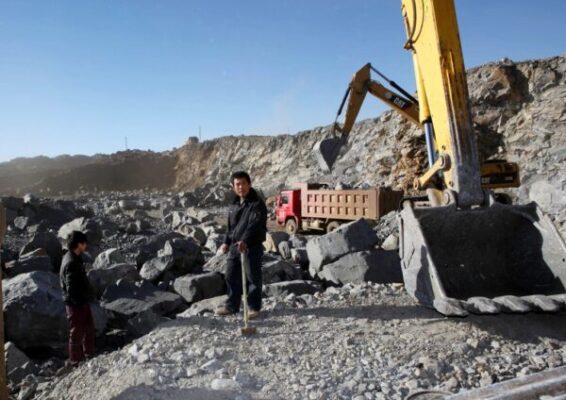Value addition will unlock Zim’s export potential

THE ongoing efforts by the Second Republic towards structural transformation from an exporter of predominantly primary products to value-added products will unlock the export potential of the country.
First, the National Development Strategy 1, launched by President Mnangagwa last year, is targeting to develop and domestic local value chains.
This way, the country will be able to add more value on its export offerings, while at the same time improving local industries, creating more jobs, and substituting its imports.
Developing local value chains will also maximise revenue and provide cushion from global shocks experienced in primary commodities. Development of local value chains on the back of abundant natural resources should be easily achieved if all stakeholders play their part.
Whilst domesticating local value chains is important, it is also crucial for the local industry to participate in regional value chains, underpinned by a strong industrialisation drive.
Compared to other countries in the region, Zimbabwe has enabling infrastructure that will make it easy for local industries to play an important part in regional value chains.
But why does this matter?
Entering or participating in regional value chains and global value chains has become a key strategy for developing countries to increase their trade and attract investment from developed countries. This emanates from the fact that it may be complex to produce a whole unit, for example electric cars, but it can be easier to focus on a component that will be attached to make a whole unit.
Regional value chains refer to regional production sharing, a phenomenon where production is broken into various stages and tasks are carried out in different countries in the region. Companies over the world are creating linkages and operations, from the design of the product, manufacturing of components to assembling, marketing, and creating international production chains.
Value chains with potential
The Action Plan for SADC’s Industrialisation Strategy and Roadmap (2015-2063) approved in 2017, identifies Zimbabwe as having potential for value chain enhancement in agro-processing, minerals and beneficiation, as well as pharmaceutical products. The Action Plan also notes potential for manufacturing, machinery and equipment, as well as the services sector.
In agro-processing, local companies can participate in horticulture, as well as production and processing of sugar, meat, fish, and soya value chains. Here, there are vast options spanning from supply of agricultural inputs and implements, provision of related services and processed foods.
The strong linkages between the local agricultural production sector and the processed foods sector makes Zimbabwe an ideal hub for agricultural production and processing.
In minerals and beneficiation, local companies can participate in value chains related to energy minerals (coal), iron and steel, base metals, diamonds, fertilisers, platinum, and cement. When looking at Zimbabwe’s current export product structure, minerals and alloys account for the largest share. Whilst most of these minerals and alloys products are exported as raw materials, there is potential for the sector to contribute more to national exports and economic development through value-addition and beneficiation.
In terms of the pharmaceutical products’ value chain, the Action Plan for the SADC Industrialisation Strategy and Roadmap identifies Zimbabwe as having potential in anti-retroviral (ARV) and TB (tuberculosis) drugs.
In the manufacturing sector, Zimbabwe is identified as having potential in leather and leather products, as well as clothing and textile. There are further opportunities in automobile products and services sectors such as tourism, financial services, as well as Information and Communication Technologies (ICTs).
For local companies planning to take part in these sectors, emphasis should be on understanding the entire specific value-chain and what is required to take full advantage of export opportunities it presents.
Opportunities through value-addition With opportunities available under the African Continental Free Trade Area (AfCFTA), SADC and COMESA, Zimbabwe will also benefit more due to its land-linked status.
Zimbabwe’s trade is mainly concentrated in SADC hence value chain strategies will then act as a catalyst to assist the country in expanding its industrial base, diversifying its export product range, and pursuing unexplored African markets. Zimbabwean companies that can find a way to build or enter already existing value chains may be able to benefit under the Made in Africa concept which has gained more traction through the AfCFTA Rules of Origin.
Private businesses should take advantage of regional value chains because they are better placed to efficiently choose entry and exit points in value chains. For example, the country has potential to be a leading player in the leather and leather products value chain through production of finished leather.
With support, local tanneries can process leather coming from countries such as Botswana and Namibia into high-end finished leather, which can be exported to feed into the leather manufacturing sector across the region. Although Zimbabwean companies may not be producing electric cars as other players in the region, the country has vast deposits of lithium which is used to manufacture batteries used in electrics cars.
Instead of exporting raw lithium, local industries can build competences in the sector and produce high-efficient batteries used in the vehicles, thus playing an important role in the production process of the cars. Lithium batteries are also used in manufacturing solar batteries, given vast deposits of lithium in the country, we may become a regional hub for producing batteries giving us the competitive edge to supply them.
Opportunities for the services sector
It is important to note that the discussions around participation in value chains should not be a preserve of players in the manufacturing sector alone as there are also huge opportunities for the services sector.
There is room for local players to build competencies around available human capital. For example, there is room for some local businesses to increase their reach in the regional market by offering marketing and communication services such as operating a Regional Call Centre for companies across the continent.
With faster internet in all parts of the country, a company in towns such as Zvishavane, Mutare, Gweru, Bindura or Chinhoyi will be able to offer services without needing to move its staff across the region.
Riding on Zimbabwe’s good academic reputation, there are also opportunities in the education sector for increasing Zimbabwe’s trade in services, with easy wins such as exports in study programmes and online learning targeting foreign students.
This can benchmark and model around existing frameworks used by leading online institutions such as University of South Africa which services over 130 countries globally.
Already, Zimbabwe has a decent pool of qualified professionals that can satisfy these demands.
For example, Zimbabwe has an opportunity to export teaching services to regional markets, particularly in subjects such as English, Mathematics and Science.
Markets such as Angola, Mozambique and Namibia have a high demand for English teachers.
Going forward
To improve the participation of Zimbabwean companies in regional value chains, there is a need for local companies to identify their entry points based on resource endowments, capabilities, capacities, and skills.
Here, the private sector should participate in areas where they can easily attain best value, based on areas they enjoy comparative and competitive advantages.
There is also a need for further support to the private sector through infrastructure upgrade and retooling, which will improve current manufacturing capacities and enhance competitiveness.
Reinforcing the institutional support infrastructure and strengthening research and innovation will also go a long way in improving the participation of the country in regional value chains.


